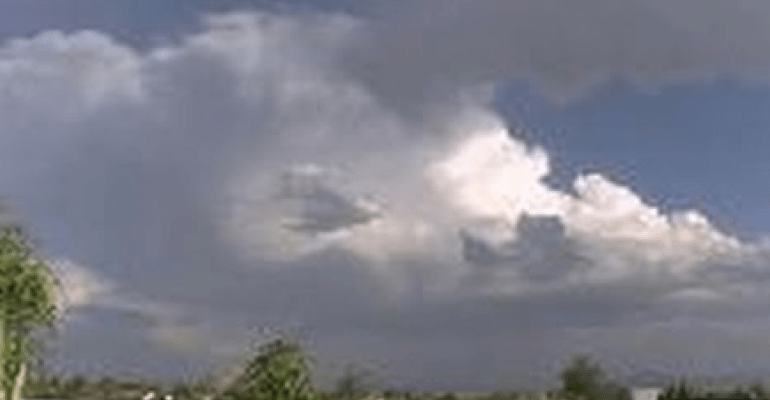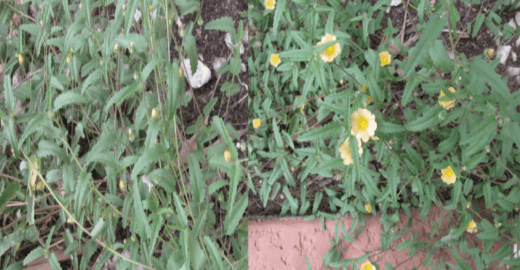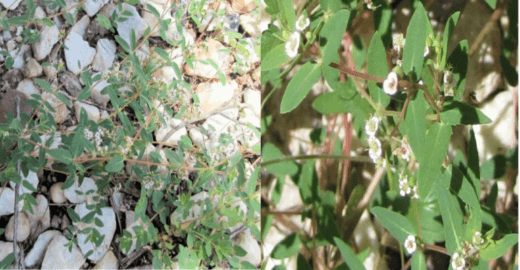
The rains of the summer monsoon have given rise to some exotic flowering plants in my yard. My wife calls them weeds. Recently, I noticed two flowering plants by the pool that I had not seen in my yard before. I sent photographs to botanist Mark Fleming at the Arizona-Sonora Desert Museum who identified them for me.
The first is Sida abutifolia. Common names include Spreading Sida, Prostrate Mallow, and Spreading Fanpetal.

Sida is a tropical plant whose range now includes southern Arizona and New Mexico, most of Texas, and southernmost Florida.
Sida is classified as an herb that grows up to one foot high and has ground-hugging stems that have small spikes. The leaves are about one inch long and the yellow flowers are about 3/4 inch in diameter. See a more scientific description and more photos from SEINet.
This plant has what I regard as strange behavior. Most of the time the flowers are closed. They all open together around 2pm and close again after two hours. This behavior has been repeated for about two weeks so far. It would seem that this limits the opportunity for pollenation.
In Mexico, Sida was used medicinally to treat boils and kidney problems (Source).
The second plant is Euphorbia capitellata aka Chamaesyce capitellata, a member of the Spurge Family. It has a lovely common name: head sandmat. Other names include capitate sandmat and head spurge.

The white flowers are less than 1/4 inch in diameter when open. The flowers look pointed before they open fully. The leaves are about one inch long. See a more scientific description and more photos from SEINet.
Capitellata is a small perennial plant with a woody base from which the herbaceous stems regrow year after year. It has a milky sap that can be a skin or eye irritant.
Capitellata is native to Arizona, New Mexico, Texas, and northern Mexico.
Have you seen these plants?
Another exotic plant in my yard from 2015, see:
Note to readers:
Index with links to all my ADI articles: http://wp.me/P3SUNp-1pi
My comprehensive 28-page essay on climate change: http://wp.me/P3SUNp-1bq
A shorter ADI version is at https://arizonadailyindependent.com/2013/08/01/climate-change-in-perspective/
